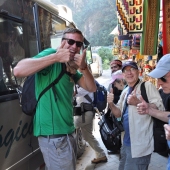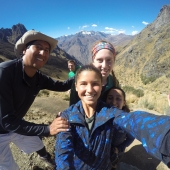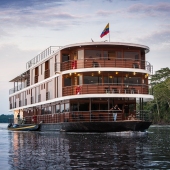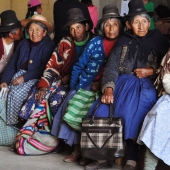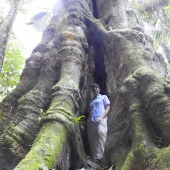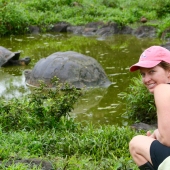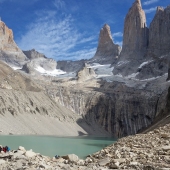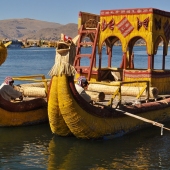10 tips to help you book a first-rate Inca Trail hike
Hiking the Inca Trail is a trip of a lifetime. Usually a one-time thing, it better be good! Right? These behind-the-scenes details will help you organize the best Inca Trail hike ever. We explain what factors are completely out of your control, (just about everything!) and the control of Inca Trail operators. And we tell you what you can, and can't do, to prepare for your hike. Not to mention how to maximize the amount of time you spend in your ultimate destination: Machu Picchu.
- The Inca Trail yearly permit calendar runs from March 1 through January 31. The trail is closed every February for maintenance. This is also the height of the rainy season. (and not a coincidence)
- Inca Trail permits can only be purchased by licensed operators. It is not possible for individuals to get their own permits and set up their own hikes. (neener, neener) 500 permits are available per day including porters & guides. This leaves about 200 places per day for hikers like you.
- Permits go on sale at the beginning of October for the following year. For instance, permits for March 1 through January 31 will go on sale in October the year before. The exact day they become available (mysteriously) varies depending on how the permits are rolled out by the ministry office. One year they offered permits by lottery (a complete disaster). Another year they rolled them out by month. And on another year, they made every permit for the year available on the same date. (This is why we ask every group pre-booking permits from October - December for March - June hiking dates, to provide a backup date. Although permits for 4-day Inca Trail hikes do not typically sell out when released in October, it is possible for an operator to buy out every permit on any date they choose if they are in front of us in the line.
- Campgrounds are assigned first-come/first-serve by the Ministerio de Cultura (with help from lottery offiicials) and Inca Trail operators do not get to choose or request or even see what is available when you make a booking. This is why you need to reserve early. Which still doesn't guarantee anything. (refer to #3 above)
- There are 2 campgrounds available on Day 3 of the 4 day hike. Winaywayna is 5 km from the ruins. If it's full, you will be assigned to camp at Phuyupatamarca, which is 12 km / 6-7 hour hike from the ruins.
- Where you camp determines what time you will arrive at the Machu Picchu ruins on Day 4, the last day of your trip. Hikers from Winaywayna can arrive from 06:30 to 08:00 am, depending on how much they drank the night before, the time they get up, and the pace of their hike. From Phuyupatamarca, the arrival is sometime between 10 am - 12 pm. (give or take a week or so. Just kidding!)
- Some operators may reserve train departures from Aguas Calientes back to Cusco at 1300 or 1400 hours without regard for the amount of time you have to explore the ruins. (just pray they're in a good mood on the day you make your reservation)
- There is wide disparity in the cost of Inca Trail hikes. And for good reason. Several Inca Trail operators offer bare-bones hikes. And their goal is to keep costs low and fill their groups. (what a business model eh?) The fixed costs are the same for every operator: train tickets & permits. The flexible expenses are: food, guide wages, porter wages, # of porters & # of hikers per group. In order to maximize profits, operators must fill their groups to capacity and decide how much to spend on porter service and meals. Here's a link to more info about what affects the cost of Inca Trail hikes.
- Tipping porters and guides is customary. Each hiker should bring US or Peruvian money on the hike and be prepared to tip porters a minimum of $25 USD each. If your operator provides 2 porters per hiker, then (lucky you) you're on the hook for at least $50. There may be an additional cook (again, if you're lucky) and your group can divide the cost of that tip. (or flip a coin to see who pays) The guide should get at least $90 from the group. (we're not kidding about that)
- Porters do not hike with you. They hike ahead and set up camps and have your meals prepared. (Like Mummy) Only the guide will hike
 with the group. The ratio is 8:1 hikers to guides. You should be prepared to carry your own day pack with water, sunscreen, rain gear, hats, blister/1st aid supplies, outerwear for layering and always carry your valuables on you.
with the group. The ratio is 8:1 hikers to guides. You should be prepared to carry your own day pack with water, sunscreen, rain gear, hats, blister/1st aid supplies, outerwear for layering and always carry your valuables on you.
The following strategies can help you to maximize your time in Machu Picchu if you end up in the Phuyupatamarca camp. (Actually a great camp!) Booking your hike with an operator who is willing to be flexible is important. Adios Adventure Traveli s flexible when it comes to maximizing the amount of time you spend in the ruins. We understand the effort it takes to get there and the importance of spending as much time as possible. These options may be used for private hikes and group hikes IF everyone in the group agrees to the arrangements. (good luck with that!)
- ask about booking a later train departure from Aguas Calientes on Day 4. (approximate train departure times are 1300, 1400, 1630, 1700, 1800 & take 4.5-5 hours to get to your hotel in Cusco)
- add an extra day to your itinerary & stay in a hotel in Aguas Calientes. With plenty of advance notice, your operator has the option to defer your train tickets to Cusco by 1 day. (this is extra work. please be extra nice to us) You can return to Machu Picchu on Day 5 using the same permits you used to hike the Inca Trail AS LONG AS YOU DON'T GET FULL GUIDED TOUR on day 4. Otherwise, you have to buy new entry tickets. If you're not completely pooped from the Inca Trail hike and you want to hike Huayna Picchu on Day 5, new entry tickets to Machu Picchu must be purchased. It is not possible to "add-on" the hike to Huayna Picchu even if there are places available. Wayna Picchu (yes, they changed the spelling because of the tourists) hikes are limited to 200 pax at 7 am and 10 am. Allow up to 2 hours for the round trip hike. Don't forget to add the cost of RT shuttle bus permits to your budget if you stay the extra day. (About $30 USD pp)
Inca Trail Permit Policies:
- Must have valid passport to get permit. This document (and promise of your 1st born child) you will present at the checkpoint to enter the trail. If you are in the process of renewing your old passport when you book your hike, you can use the old passport to get the permit but you will be required to present it to enter the trail. If the passport # on your permit doesn't match the passport you present at the checkpoint, thou shalt not enter the hallowed turf of the Inca Trail. Must present original passport documents. If you have 2 passports, make sure you keep track of which one you use for the permit.
- "Life is Simple" is the motto for the Peruvian Ministerio de Cultura. They do not offer refunds, transfers, cancellations or changes of any kind. If you are unable to start your hike on the scheduled date, your only option is to abandon your hike. You could buy new permits on another date (if you're spoiled rich) if available. If you don't show up for the scheduled date, your place will go empty. In order to buy another permit on another day, you must wait until the date of your first permit expires so you are out of the reservation system, then we can buy another new permit in your name.
- Once the permits are sold out, that's it. It's not possible to get permits for anyone including Presidents and Prime Ministers. Bribery you say? Good luck with that!
Before you hike the Inca Trail:
- Plan to acclimatize. If you don't live at 8000 ft/2440 m. or higher, it's recommended that you arrive in Cusco (11,000 ft/3350 m) at least 2 days before starting your hike.
- If you are arriving in Cusco the day before your hike starts, pack all your hiking gear in your carryon and wear your boots when you fly. Luggage can get lost and it has happened that hikers arrived without their luggage and have been seen crying all the way to Cusco city center to buy new boots the night before they hike. Or opted to hike in their sneakers.
- Be prepared with hand sanitizer or wet wipes. There are no showers on the Inca Trail. Some campgrounds have rustic poorly-maintained receptacles that can be used as a toilet. Some operators provide a "peepee" tent. It's called peepee for a reason. It's only for #1. And I don't believe a man has ever been inside one. The toilet in the peepee tent is full of absorbent material that is packed out and disposed of properly. (by men! HA! Revenge is swee girlst!)
If quality is important to you, these tips will help you decide what questions to ask your Inca Trail operator before you book your hike. But we hope you will book your hikes with us. Happy Inca Trails to YOU!


